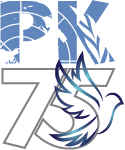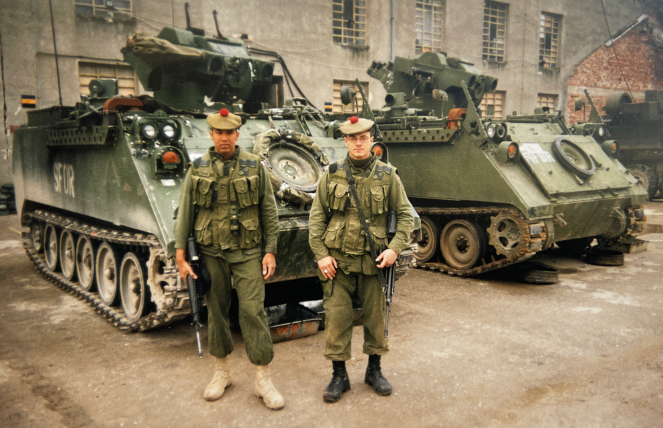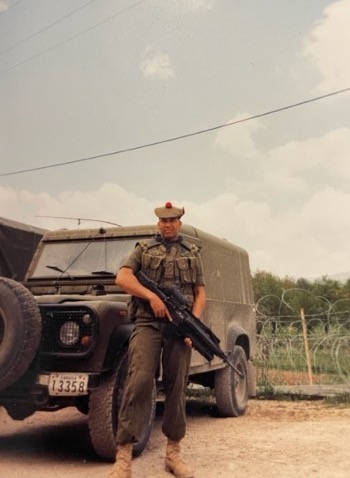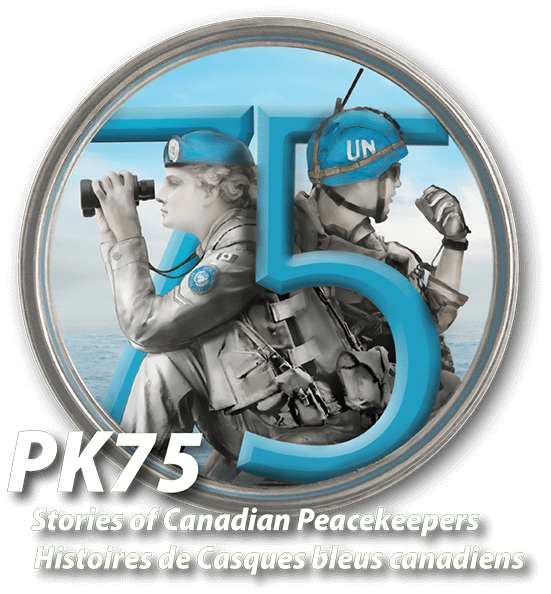

Toronto, ON, Canada
Allan Chin
Current Location: Milton, ON, Canada & Trinidad
The former Republic of Yugoslavia fell into war in 1991, as different republics sought autonomy and independence. Thousands died and the world stepped in to bring Peace. One of those republics, Bosnia & Herzegovina, saw intense fighting and bloodshed. Peace was brought about with the United States-brokered Dayton Peace Accord in 1995. This agreement paved the way for a NATO-led peace mission. This was a dramatic shift from the previous United Nations missions in Yugoslavia.
As I entered my second year of my B.A. at the University of Toronto in 1995, little did I know that the Dayton Peace Accord at that time would be put to the test and scrutiny of the world in April of 1998, with me and 120 soldiers at the centre of it. I was an infantry reservist with the 48th Highlanders of Canada and augmented the 1st Battalion, The Royal Canadian Regiment (1RCR) based out of Petawawa, ON. The 1 RCR Battle Group deployed to Bosnia in January 1998 on Op Palladium. The Battle Group was approximately 1,250 Canadian soldiers stationed in the region as part of NATO’s 32,000-strong Stabilization Force (SFOR) in the Former Yugoslavia.
I was with Charles Company, 8 platoon, and the Company assigned Area of Responsibility (AOR) was the town of Drvar, which was located in a narrow valley near the Croatian Border in northwestern Bosnia. My first impressions coming into Drvar were how steep the mountains were and how close the roads were to the edges. Second, was the location of the camp, which was a grain mill located at the bottom of the valley, not the best spot to defend.
The town of Drvar was composed primarily of Bosnian Serbs however, during the war, Bosnian Serbs were displaced by the Croatian Army supported by Bosnian Croats. Part of the Peace agreement was to allow displaced citizens (refugees) to return to their homes. Charles Company prepared for the return of approximately 200 Bosnian Serbs back into Drvar. During the war, the Bosnian-Croatian army, known as HVO, took over an apartment building in Drvar as their base. The HVO was given notice to move out, as displaced Bosnian Serbs were returning to their apartments, but this was not taken well. As small numbers of Bosnian Serbs returned to their homes in the surrounding areas, tensions started to mount with the burning of these homes.
Vehicle and foot patrols were increased 24/7 with the rising tensions. Charles Company had increased air support with a British helicopter equipped with state-of-the-art day and night optics. The primary vehicle used for patrols was the Grizzly, a six-wheeled armoured vehicle with a gun turret with two mounted guns, the 7.62 mm Machine Gun and the .50 calibre Heavy Machine Gun. I was primarily the turret gunner for the tour. Patrolling for 12 hours on a daily rotation, in cold and wet weather, definitely wore on the body.
Sadly, the tensions mounted to the point, where an elderly Bosnian-Serb couple were murdered by being burnt alive in their house. The tensions between the two ethnic groups exploded figuratively and physically on the morning of 24 April 1998. Croatians, along with other complainants, protested the move of Bosnian Serbs back into the apartments, and stormed the municipal building in downtown Drvar. The mayor was beaten, and buildings burnt, including International Offices, International Police Force Offices, and Non-Governmental Organization (NGO) Offices.
I had finished a 12-hour night patrol and was soon awakened to go back out, as NGOs needed to be extracted from the area. This was it, the culmination of all the training I ever did, was now to be used. The day rolled into night and back into day, as other platoons from the Battalion were redeployed to Drvar to assist Charles Company. The camp went from 140 to 400 overnight. We knew it was a big deal as it got international media coverage and, when the Commanding Officer Lieutenant-Colonel Devlin rolled into town with the Supreme Allied Commander-Europe, General Clarke, it was definitely a big deal.
With the increased show of force, things quickly settled back down in Drvar. All eyes were on Drvar as this was the most violent incident since the signing of the Peace Agreement, and the stability of the surrounding regions was very much dependent on the outcome of Drvar. The Croatians in Drvar did not trust Canadian soldiers because of who we were helping, but in other towns it was just the opposite. Canadians were loved and hated by all sides; it was just dependent on who you were helping locally. This was frustrating, but I had to step back and look at the big picture of helping an entire nation, which was hard for a young soldier to do.
I knew things were getting better but slowly, and the tangible for me was seven years later, as I deployed to Afghanistan. I saw Croatian soldiers at the Kandahar Airfield as part of the NATO contingent. This resonated with me as it showed how far a country and its people had come.
Biography
My name is Allan Chin, and I was born in Trinidad, a small island in the Caribbean. I immigrated to Canada at the age of 13 and settled with my family in the City of Mississauga, ON where I still live today. I soon got involved with the Royal Canadian Army Cadet program and joined the 2824 Cadet Corps sponsored by both the Department of National Defense and Peel Regional Police. It was here the foundation was laid for my future endeavours. I made the most of my cadet time and went away every summer, from Ipperwash to Banff to Petawawa to the United Kingdom.
In 1994, I joined the 48th Highlanders of Canada which is an Infantry Reserve Unit based out of Toronto. I completed my Infantry Course in the summer of 1995, which was an interesting time. The Airborne Regiment had been recently disbanded and members of 3 Commando were tasked with the running and training of the Reserve Infantry course in Petawawa. It would be an understatement that, for seven weeks, I ran everywhere. I completed my Communications course and Machine Gunner course in 1996. I deployed with the Regiment in 1997 on a Small Unit Exchange to Scotland attached to the Highlanders (Gordon, Seaforth, and Cameron Highlanders). In the summer of 1997, I was tasked as a Section Commander to the Land Force Central Area Training Centre in Meaford.
I redeployed to Canadian Forces Base Petawawa for pre-deployment training with 1st Battalion, The Royal Canadian Regiment (1RCR) as a section gunner. The 1 RCR Battle Group deployed to Bosnia in January 1998 on Op Palladium, Rotation (Roto) 2. In 1999, I was back in Petawawa and completed my Junior Leadership Command course and Junior Non-Commissioned Officer Infantry course. As the army transitioned to updated courses, I also completed another leadership course (DP3A) at Canadian Forces Base Gagetown in 2001. One of the highlights from my military career was the completion of my Basic Parachutist course at Canadian Forces Base Trenton in 2004.
In 2005, I initially deployed to South-West Asia on OP Athena Roto 4 as an Infantry Section Commander, with the Defense & Security platoon for the Theater Support Element (TSE), which was responsible for the security of Camp Mirage and the Airfield. However, upon arrival in theater, the platoon, which was comprised of four sections, was split up, with two sections in Camp Mirage and two sections in Afghanistan. These sections would rotate throughout the tour. The sections in Afghanistan were attached to Golf Company 2 RCR, which fell under Task Force Kabul (TFK). Those sections augmented the company, staffing multiple roles which primarily consisted of force protection of Camp Julien; however, we also undertook mounted and dismounted patrols in Kabul.
In August 2005, during the latter half of the tour, the Government of Canada formed the Kandahar Provincial Reconstruction Team (KPRT) at Camp Nathan Smith in Kandahar City. My section and I were deployed to Kandahar and were attached to B Coy, 3 PPCLI at the KPRT under OP Archer, which was part of Regional Command South, under U.S. command by the 173rd (U.S.) Airborne Brigade. Like Kabul, the sections augmented the company, staffing multiple roles, primarily force protection of Camp Nathan Smith, and conducted mounted and dismounted patrols in Kandahar. I definitely racked up the air miles on the CC130 Hercules.
I retired from the military in 2019 at the rank of Sergeant, after 24 years of service with the Reserves. Outside the military, I am a police officer with Peel Regional Police, with 23 years of service. I have worked uniform patrol, Criminal Investigations at the Divisional level, and with the Intimate Partner Violence Unit. I was a member of the Emergency Response Team for Pearson International Airport, and I had the opportunity to be a member of the Tactical Hostage Rescue Unit for 10 years, holding specialty roles as a Breacher, Rappel Master, Sniper, and Team Leader. I am currently assigned to 12 Division as a Uniform Front line Patrol Sergeant. I am also currently a member of the Chief’s Ceremonial Unit and had the honour to train and prepare the Bearer Party for the State Funeral for former Mayor Hazel McCallion.

Drvar front gate.

Drvar, Bosnia.


